Along the banks of the Mississippi River, right before it spills out past New Orleans into the sea, lies Cancer Alley: an 85-mile strip of shoreline where residents are contracting cancer at astronomical rates. But this isn’t a phenomenon based on genetics or some cruel twist of fate.
Cancer Alley is the product of environmental pollution. And today we’re going to figure out exactly where this pollution is coming from.
Our Changing Climate series
This post is part of a new series created by ethical.net in partnership with Our Changing Climate, an environmental YouTube channel that explores the intersections of social, political, climatic, and food-based issues. Get early access and support this important research by becoming a Patreon.
This is the story of plastics, the harm they cause, the industries that create them, and how that strip of Mississippi shoreline, and areas like it, are suffering because of them.
What is plastic?
If you walk into your kitchen, pretty much everything has encountered plastic in one way or another. The plastic bags you stuff into a drawer, your favorite cup, and even the packaging keeping those blueberries fresh. But despite plastic’s ubiquity, we often forget where it comes from.
Indeed, when it comes to plastic, our efforts seem much more focused on what happens after rather than before we use it. So first, let’s understand how plastic gets made.
Plastics are essentially fossil fuels in solid form. 👀
👉 In fact, 99% of plastics are made from chemicals rooted in fossil fuels.
The creation process for plastic begins with crude oil, coal, or natural gas, which is then refined and distilled or ‘cracked’ into usable chemical compounds such as ethylene or benzene. Of course, certain plastics are the product of recycled goods, but I’ll get into that later.

What’s key here is that the plastic we use so heavily is really the same as the petroleum we put in our cars, or the natural gas we use to heat our homes. Which is one of the reasons why the fossil fuel industry loves plastics.
Big oil loves plastic
With the economic, pandemic, and environmental crises bearing down on the fossil fuel industry, Big Oil seems to be in trouble: BP reported losses of $5.7 billion in 2020, while ExxonMobil lost a staggering $22.4 billion. It was truly a crushing year for the fossil fuel industry – yet oil and gas executives remain optimistic.

ExxonMobil says it hopes to grow by 4% each year, and part of its scheme to achieve that growth involves “one word: plastics”. Indeed, plastic seems to be the fossil fuel industry’s plan for escape from the transition to a zero-carbon world.

We’re witnessing Big Oil pour resources into new plastic factories. North of Corpus Christi, Texas, ExxonMobil secured hundreds of millions of dollars in tax breaks to build a natural gas distillery or cracking site to produce plastics.
Shell has also put its faith in plastics, investing in a multi-billion dollar ethane cracking factory on the Ohio River in Pennsylvania, which, when finished, will churn out 1.6 billion metric tons of plastic pellets every year. Chevron is also building a new plant, as is Total.
All told, the fossil fuel industry announced 333 chemical and plastic projects between 2010 and 2018. Greenpeace Executive Director Annie Leonard explained this obsession with plastic in a PBS Frontline report:
“[S]ingle-use plastic is their plan B. They’re not going to be able to continue to drill that oil and gas and burn it for energy anymore, because the climate can’t sustain it. So this is their lifeline. They are going to double down on single-use plastic like we have never seen.”
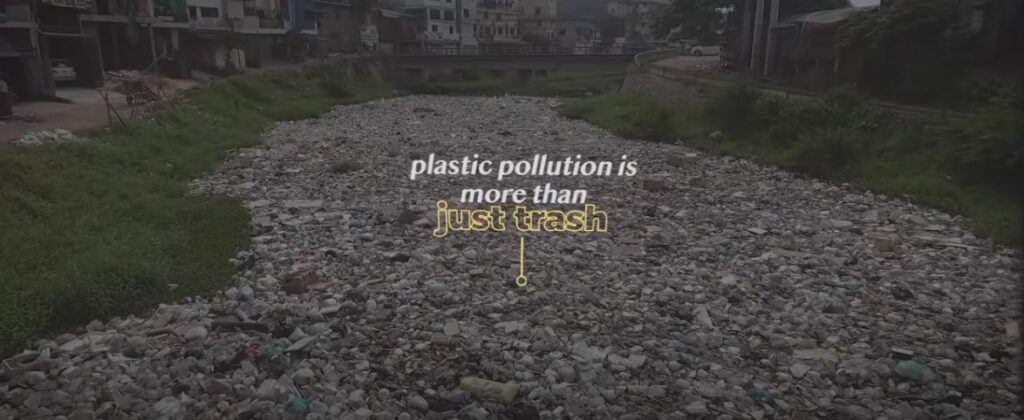
And all of this new plastic infrastructure means increased production and ultimately a barrage of emissions, because alongside the physical pollution of plastics littering our waterways and immediate environments, its manufacture causes a colossal greenhouse gas problem.
The real impact of plastic
In Cancer Alley, despite community organization and some small victories, the situation is worsening: yet another plastic factory is negotiating the permitting process. Considering the region’s (and the country’s) history of complete disregard for the health and well-being of the low-income communities of color in the area, the construction of this heavily polluting factory comes as no surprise. Cancer Alley is the product of the environmental racism that pervades the US and the world at large.
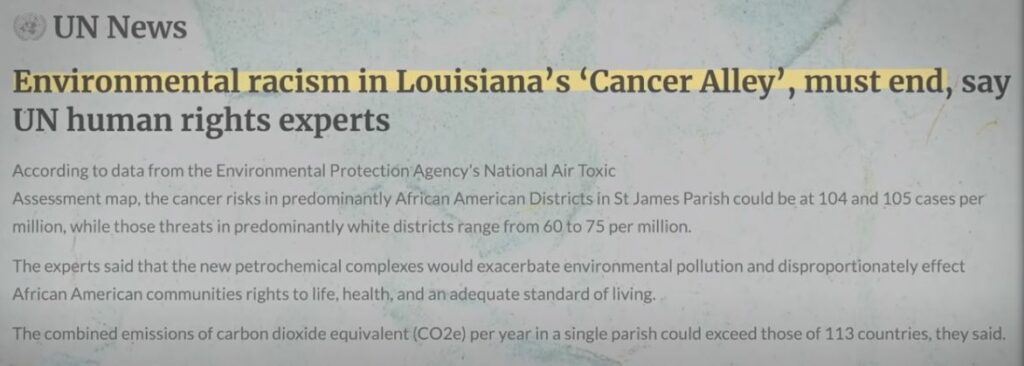
“I have a hundred people in the meeting. ‘Has anybody in the room had anybody in the house die?’ Everybody stands up.”
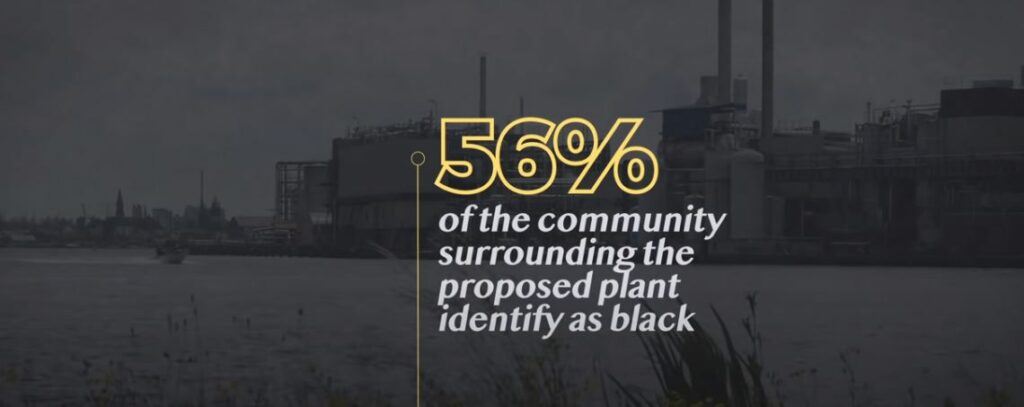

When the factories surrounding these communities break up natural gas and crude oil into usable compounds for plastics, rubber, or fertilizer, they also release tons and tons of highly toxic carcinogenic compounds into the air. As a result, the Environmental Protection Agency (EPA) told one town in Cancer Alley, St. Johns Parish, that it faced the highest risk of cancer in the country.
But even if they somehow escape the grip of cancer, residents like Marilyn Francois can barely breathe when taking out the trash: “[Between leaving] the trash can [and getting] back in[to] the house, I was breathing hard. And I knew it was something in the air.”
But the creation of plastics is not just a local problem; it’s a global one. A comprehensive report on plastic creation worldwide reveals that if the industry continues with business as usual, by 2050 plastics will create 56 billion metric tons of greenhouse emissions: 10–13% of the entire remaining carbon budget.
The report goes on to say that the plastic and petrochemical industries’ current plans “to expand plastic production threaten to exacerbate plastic’s climate impacts and could make limiting global temperature rise to 1.5°C impossible.”
The think tank Carbon Tracker estimates that for every metric ton of plastic created, $1,000 worth of externalities like health issues and environmental destruction are also created.
Essentially, even before plastics reach our shelves or get thrown into our seas, its impacts are massive – and fossil fuel companies are to blame.
Recycling is a sham
Right about now, you may be thinking, “Well, I guess that means that I should recycle more”, right? But here’s the thing: that is exactly what the fossil fuel industry wants you to do. In fact, for well over forty years the plastic and fossil fuel industries have poured millions of dollars into marketing campaigns shifting the blame away from industry and onto the consumer:
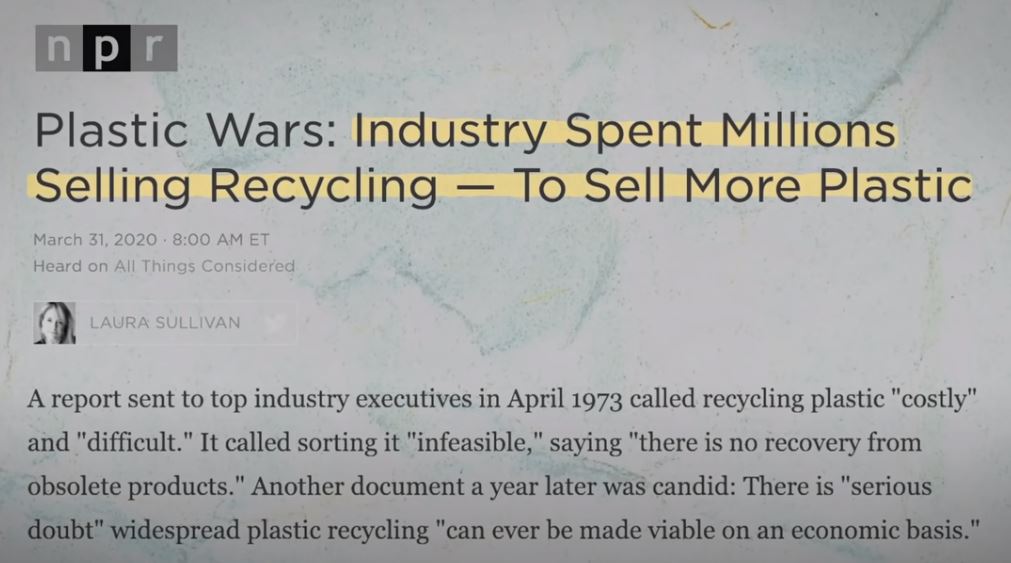
“People start pollution. People can stop it.”
“And now, I’m what I’ve always wanted to be.”
“Remember, a lot of the plastic packaging that you have in your kitchen is recyclable.”
📌 Yet the reality is that only 9% of recycled plastic actually gets recycled, because the majority of the plastic we use, while theoretically recyclable in the lab, is too costly to recycle in practice.
That’s right: the majority of the plastics you’re throwing in your recycling bin end up in the landfill. If you think this isn’t the fault of the plastics industry, you might be surprised that those little triangles on the backs of containers are not a sign of their recyclability, but a system that helps identify what kind of plastic the container is made from.
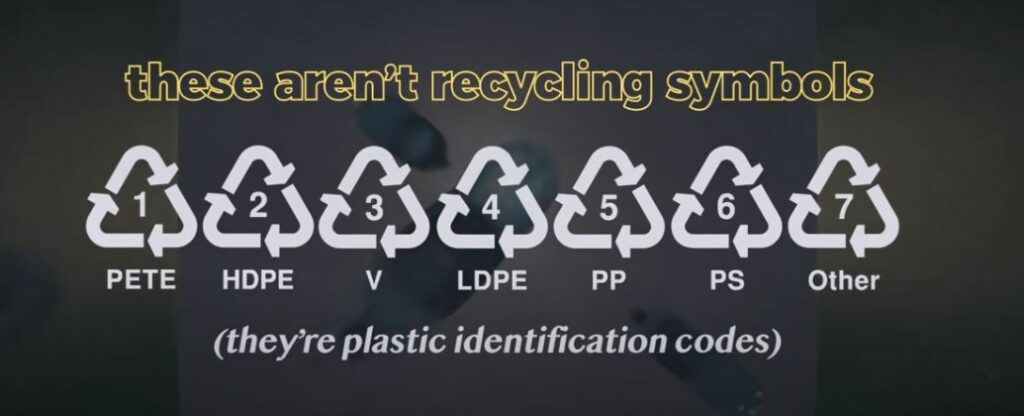
This triangle logo tricks customers into thinking their plastic is recyclable: “That code was a numbering system put inside the well-known symbol for recycling, the chasing arrows. The problem, recyclers said, is that it left the impression that all those kinds of plastics were actually being recycled.”
As a result, recycling plants are inundated with non-recyclable plastics, while consumers continue to buy and recycle, thinking they’ve avoided plastic’s impact.
In short, by placing the emphasis on recycling – which happens after the plastic has been made and the profits pocketed – the fossil fuel and plastic industries get consumers to buy more by assuaging their guilt about pollution. Or, as the head of the Society of the Plastics Industry puts it:
“If the public thinks that recycling is working, then they’re not going to be as concerned about the environment.”
We need a different world
However, there is some hope. Carbon Tracker predicts that demand for plastic won’t match fossil fuel companies’ predictions, and reveals that the plastics industry is ripe for regulation that could squeeze fossil fuel industries even more.
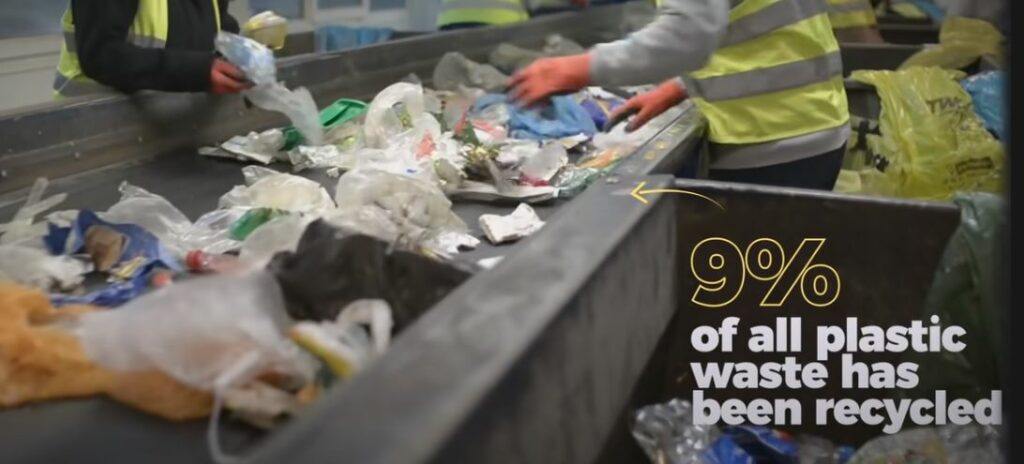
But, that won’t happen unless we mobilize. And no, I’m not talking about straw bans; I’ve made an entire video about why they’re ineffective and ableist. What’s needed is a re-envisioning of how our packaging and production systems work.
As individuals, especially in countries like the United States, especially for the elite which generate disproportionate amounts of waste and emissions, it is important to think hard about our relationship to consumption.
But reducing consumption, plastic or otherwise, is a difficult prospect in a world that has plastic-wrapped everything.
📣 Nowadays you can’t even buy lettuce without buying plastic, which means that the path towards de-centering plastic has to focus on systemic changes.
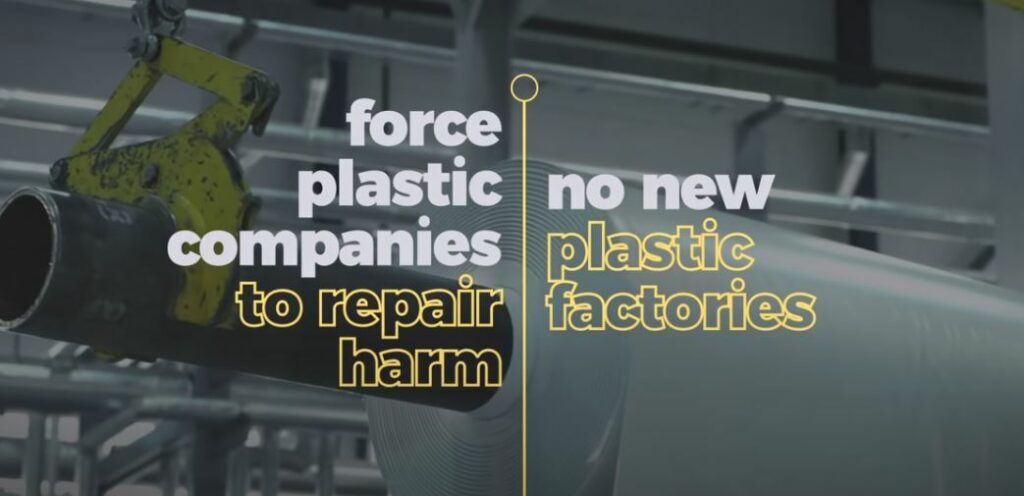
Corporations need to cease these destructive practices and the people and governments have the power to force them to do that. On the policy level this means not subsidizing new plastic plants, and requiring companies to pay for or internalize the environmental and social costs of plastics, including the costs already incurred by people in areas like Cancer Alley.
But until the fossil fuel industry is forced to reckon with the immense harm it’s caused, it will continue to hold onto plastic for dear life.


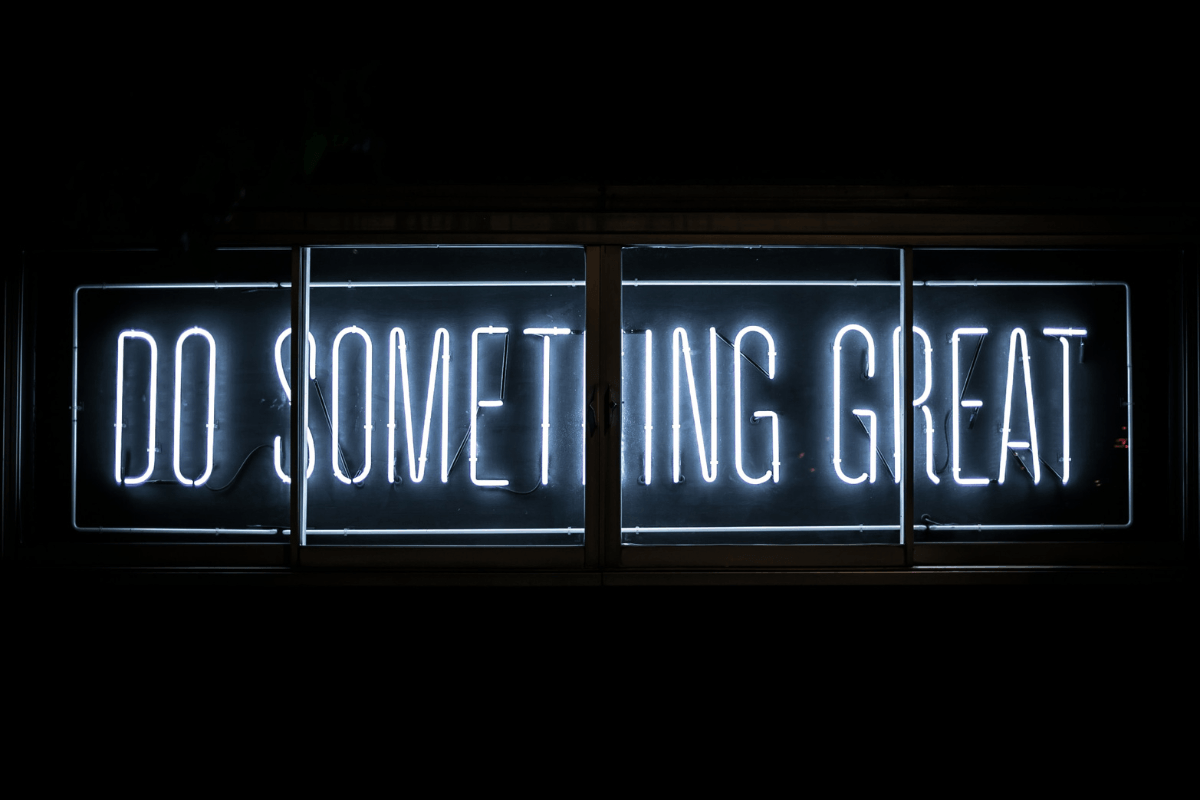
Leave a Reply